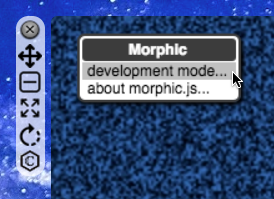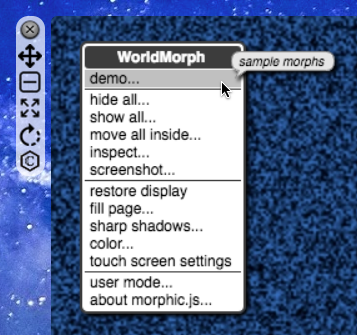After creating a working proof-of-concept Squeak Smalltalk virtual machine with a combination of existing SqueakJS code and handwritten WASM (for the instruction functions), I set about automating the generation of WASM from JS for the rest of the functions. (A hybrid WASM/JS virtual machine has poor performance, because of the overhead of calling JS functions from WASM.) Although I expect eventually to write a JS parser with Epigram, for now I’m using the existing JS parser Esprima, via the JS bridge in SqueakJS. (The benefits of using Epigram here will be greatly improved debugging, portability to non-JS platforms, and retention of parsed comments.) After parsing the SqueakJS VM code into Smalltalk objects representing JS parse nodes, I’m using those objects’ WASM generation behavior to generate a WASM-only virtual machine. I’m taking advantage of the newly-added type management instructions added to WASM, as part of its garbage-collection proposal.
type hinting
To make effective use of those instructions, we need the JS code to give some hints about object structure. For example, the SqueakJS at-cache uses JS objects whose structure is emergent, rather than defined explicitly in advance. If SqueakJS were written in TypeScript, where all structures are defined in advance, we would have this information already. Instead, I add a prototype JS object to the at-cache object, describing the type of an at-cache entry:
this.atCacheEntryPrototype = {
"array": [],
"convertChars": true,
"size": 0,
"ivarOffset": 0}
this.atCachePrototype = [this.atCacheEntryPrototype]
this.atCache = []
this.atCache.prototype = this.atCachePrototype
When generating WASM source, an assignment parse node can check to see if its name ends with “Prototype”, and create type information instead of generating source. The actual JS code for setting a prototype does practically nothing at VM runtime, so has no impact on performance. Types are cached by the left-side node of an assignment expression, and by the outermost scope in a registry of all types. The types themselves are instances of a WASMType hierarchy. They can print WASM for themselves, and assist in printing the WASM for structs that use them.
Overall, I prefer to keep the SqueakJS implementation in JS rather than TypeScript, to keep the fully dynamic style. These prototype annotations are small and manageable.
further JIT optimization
After I’ve got WASM source for the complete virtual machine, I plan to turn my attention to the SqueakJS JIT. This translates Smalltalk compiled method instructions to JS code, which in turn is compiled to physical processor instructions by the JS execution engine. It may be that the web browser can generate more efficient native code from WASM we’ve generated from the generated JS code. It will be good to measure it.











 Since
Since  For the impatient…
For the impatient…